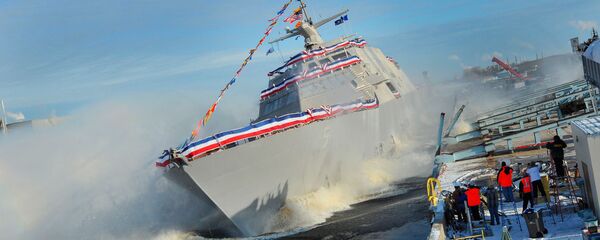The speedy Expeditionary Fast Transport (EPF) catamarans are designed to transport nearly 545 tons of cargo and 312 personnel for 2.2 kilometers at speeds of up to 35 knots (80 kmh). They have been deployed to Africa and the Middle East as well as to Singapore. The US purchased 10 ships of this class, for $217 million each. Five of them are already in service, and the other five are being built, according to Bloomberg.
According to Gilmore, "the Navy accepted compromise in the bow structure, presumably to save weight, during the building of these ships." As a result, multiple ships of the class have sustained damage to the bow structure. Nevertheless, even if reinforced the bow still may be damaged by waves in the high seas.
EPF ships should wait out the highest waves or travel at speeds much lower than their maximum, he wrote in the report.
The first catamaran bought in 2012 required $511,000 worth of repair works after it was damaged by waves during deployment. The repair of each of the other three EPF's cost as much as $1.2 million. The fifth ship awaits its bow reinforcement during its nex shipyard visit.
Meanwhile, this is not the first time that the US’ advanced warships are in desperate need of costly repairs.
In December 2015, it was reported that the US Navy combat ship Milwaukee broke down in the open sea while transiting to its home port of San Diego. The ship was commissioned 20 days before the incident. The ship sustained failures of the propulsion plant and then was towed to a base in Virginia.
Senator John McCain described the incident as "deeply alarming" for the US Navy and pushed for a thorough investigation.
The state of the US fleet has been a concern for many military analysts, especially taking into account the modernization of the Russian navy and China’s rising naval power.
For instance, recently Seth Cropsey, former US Assistant Secretary of Defense, wrote that the US Navy needs more new ships and submarines to counter the "rising global threats." To ramp up the US’ naval power, $24 billion is needed annually, a 45-percent increase in spending, according to him.



